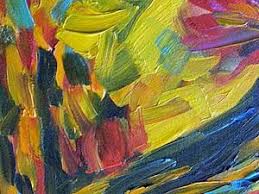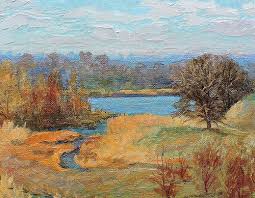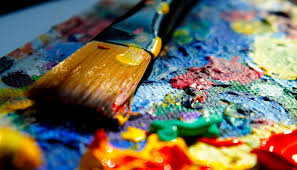author refers
MASTERPIECES OF PASTEL FROM FUNDS OF THE TREYAKOV GALLERY (part 2)
 In Russia, pastel technique appeared in the second half of the XVIII century, but never reached such popularity as in Europe. The first pastors known to us were invited foreign masters – G.-F. Schmidt, V. Eriksen, Gagelgans, I.-G. Schmidt, I. Bardou and their younger contemporary K. Bardou. Many of them were portrait painters. Their works are executed at a good professional level, in the tradition of cabinet portraiture. They are characterized by a picturesque solution, they carefully wrote out individual features, finely modeled faces, powdered wigs, carefully detailed clothing, thin foam of lace, the mysterious sparkle of orders, the gentle shimmer of tones typical of pastels. In these small, often paired, family portraits that once adorned the walls of Russian noble nests, live human faces, famous and unknown, appear in front of the viewer – people who have gone down in history but have not sunk into oblivion, thanks to artists who have preserved their appearance for posterity. Continue reading
In Russia, pastel technique appeared in the second half of the XVIII century, but never reached such popularity as in Europe. The first pastors known to us were invited foreign masters – G.-F. Schmidt, V. Eriksen, Gagelgans, I.-G. Schmidt, I. Bardou and their younger contemporary K. Bardou. Many of them were portrait painters. Their works are executed at a good professional level, in the tradition of cabinet portraiture. They are characterized by a picturesque solution, they carefully wrote out individual features, finely modeled faces, powdered wigs, carefully detailed clothing, thin foam of lace, the mysterious sparkle of orders, the gentle shimmer of tones typical of pastels. In these small, often paired, family portraits that once adorned the walls of Russian noble nests, live human faces, famous and unknown, appear in front of the viewer – people who have gone down in history but have not sunk into oblivion, thanks to artists who have preserved their appearance for posterity. Continue reading
RUSSIAN ACADEMY OF ART OF ST. PETERSBURG (part 2)
 Under Catherine II, in 1764, a new detailed Charter of the Imperial Academy of Arts was adopted, and the close sovereign Ivan Ivanovich Betskoy became president. The Empress wrote: “For better encouragement and success, We, having taken this Academy into Our patronage … determine it to be under our sole Imperial jurisdiction, providing it with the amount necessary for its maintenance.” In the early period of the reign of Catherine II, a kind of “state utopia” of enlightened Russia arose, and the Academy of Arts had to play an important role in creating a visible image of the transformed empire.
Under Catherine II, in 1764, a new detailed Charter of the Imperial Academy of Arts was adopted, and the close sovereign Ivan Ivanovich Betskoy became president. The Empress wrote: “For better encouragement and success, We, having taken this Academy into Our patronage … determine it to be under our sole Imperial jurisdiction, providing it with the amount necessary for its maintenance.” In the early period of the reign of Catherine II, a kind of “state utopia” of enlightened Russia arose, and the Academy of Arts had to play an important role in creating a visible image of the transformed empire.
Catherine II described her reign in a letter to her permanent correspondent, ambassador of the tiny German state of Saxe-Goth in Paris, Baron Melchior Grimm, ironically alluding to one of La Fontaine’s fables and, in addition Continue reading
ART UNIONS AND CREATIVE UNIONS OF RUSSIA ON THE TURN OF THE XIX-XX CENTURIES (part 1)
 Abramtsevsky (Mamontovsky) art circle – the so-called Representatives of the creative intelligentsia, mainly Moscow, united around the famous businessman and philanthropist S.I. Mamontov. Meetings and meetings of artists and art lovers took place in Mamontov’s house on Spassko-Sadovaya Street, and in the summer, in the Abramtsevo estate near Moscow near Sergiev Posad. Mamontov financially helped artists, supported them with many creative endeavors. The circle existed in 1878-93, while it was never an official society or an art group. Artists often came to Abramtsevo for the whole summer with their families. Here they could work and communicate. In the Abramtsevo circle, the study of Russian history and culture was combined with the desire to revive the traditions of folk art. The estate organized workshops for the revival of ancient art crafts (wood carving, majolica, sewing). Continue reading
Abramtsevsky (Mamontovsky) art circle – the so-called Representatives of the creative intelligentsia, mainly Moscow, united around the famous businessman and philanthropist S.I. Mamontov. Meetings and meetings of artists and art lovers took place in Mamontov’s house on Spassko-Sadovaya Street, and in the summer, in the Abramtsevo estate near Moscow near Sergiev Posad. Mamontov financially helped artists, supported them with many creative endeavors. The circle existed in 1878-93, while it was never an official society or an art group. Artists often came to Abramtsevo for the whole summer with their families. Here they could work and communicate. In the Abramtsevo circle, the study of Russian history and culture was combined with the desire to revive the traditions of folk art. The estate organized workshops for the revival of ancient art crafts (wood carving, majolica, sewing). Continue reading




